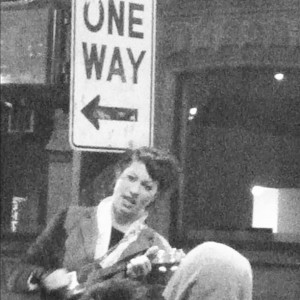
All businesses build capital if they want security. Apple had interesting special reasons to keep their capital all stored in cash. Big arts companies need capital, too. Non-profit arts institutions keep theirs in endowment funds, buildings, and in the case of museums, their art objects. For profit arts companies – film production companies, television stations, etc., have different incentives, but a lot of their capital is stored in relationships with talented artists, and reputation from past successes, not it money at all.
And at the far end of the spectrum, leading the way into the new arts economy as usual, we have Amanda Palmer. Her cash on hand is small, even if you count the wild success of her most recent Kickstarter campaign, which is at half a million dollars and counting. For every dollar she raises her work commitment goes up, too. And given the expenses of touring, producing, marketing, and distributing records even on a shoestring budget, and the work of actually doing all the performing, that huge pile of gross revenue will translate into startlingly little profit at the end of the day. I don’t know about you, but I want to live in a world where someone like Amanda Palmer can come out of a project like this having made a decent salary, at least.
But even with not that much money in the bank, Amanda Palmer has a huge reserve of long term capital, and she stores hers in love.
Yes, I’m bringing love into a discussion of arts economics.
People are going to do that a lot in the next few years, so get ready for it.
AFP’s support for her is very, very strong, and can pay off for her and her art in a variety of ways, from backing the Kickstarter campaign to investing in Loanspark, to putting her up in a strange city or helping find a location for a photo shoot or a van in New Haven to borrow for a music video shoot (I tried, but all my percussionist friends were using their vans that day). All of that comes from the love of her fans, and because we have crazy awesome communications technology now it’s really easy to convert that love and fandom into tangible benefits for the artist and the art. And of course the audience members involved – If you help an artist you love with something you can do for basically free (borrow a van) you’re not going to feel taken advantage of, you’re going to feel part of something great, and that love you feel don’t diminish because it was spent. It will increase because was involved.
Just to put on my finance hat for a minute: love is an insanely valuable asset class. It doesn’t devalue with inflation. It grows over time. When you draw on the love of your fans to save you money or buy your art, you aren’t spending the love you way you spend money. More often than not you’re increasing the love because you’re connecting people with the awesome stuff they care about. Just as a business investment, apart from the actual benefits to human existence, happiness, and wonder, love is fucking awesome.
And to put on my liberal artsy hat for a minute: isn’t it great that wall street can’t ever invest in love? It’s such a valuable asset, and it’s only available to wonderful people. It’s only available to artists who actually make wonderful things (now THAT’S what I call democracy). It’s only available to people who inspire us. Amanda Palmer has a TON of it, and it’s not the result of a cold strategy and merciless aggression. It’s a result of years doing what art is really supposed to do – make people’s lives better. She’s spent years trying to inspire people, given them wonderful experiences, bring them excitement, and make them happy. And in return, she’s earned our love.
Thirty or forty years ago, pop musicians could be loved by a huge fanbase, but through whatever quirk of fate still not be able to build a career out of it. Record companies could ignore them, and the loving fanbase couldn’t easily support the artist like a magical flock of birds carrying the band through the air, a different bird taking the weight of each step. But we can do that now.
Thanks to the incredible speed of communication, we can talk about love and investment in the same conversation. If we look at it in the pre-internet way, that makes the love part seem dirty and cynical, and makes the investment part seem wishy-washy and weak. But that’s not the world we live in anymore.
My favorite implication of all this, at least for now, is that the best thing you can do as an artist, both to make great stuff and to grow your business, is to fucking captivate people.
